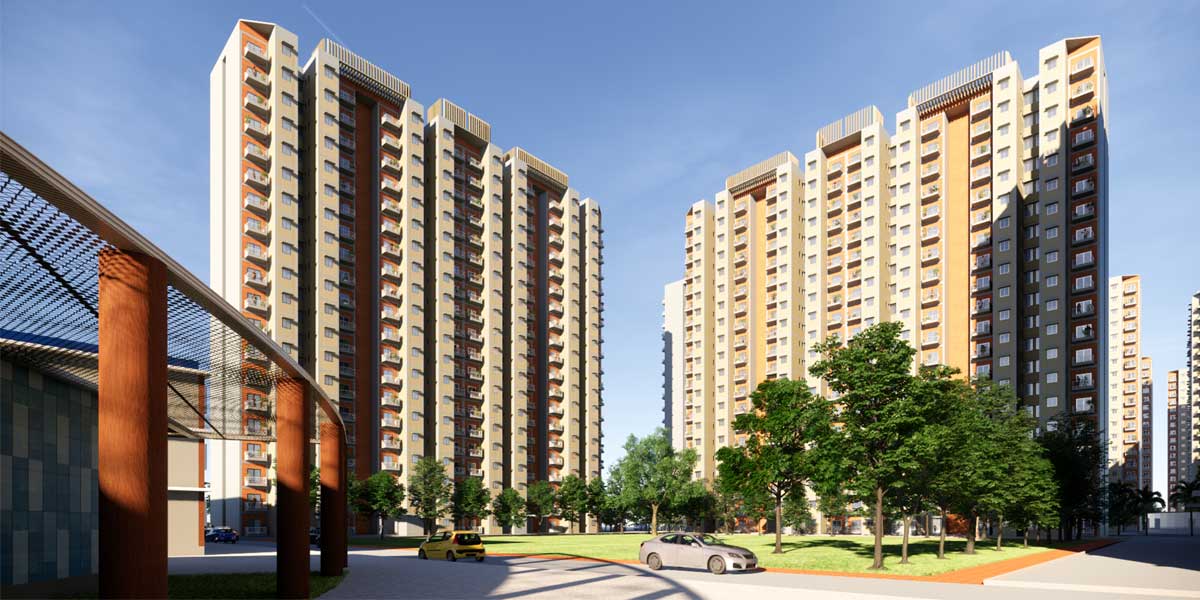

The growing affordable housing deficit in India, further highlighted by COVID-19, has highlighted the urgent need to deliver a solution to the forefront. Technology-driven homes have the potential to make modern housing an affordable and attainable vision. These versatile technology-driven catalogue designs are available for residential apartments, student hostels, co-living solutions and staff housing.
Precast modular construction has been around for a while; with new technological advancements, modern structures can be built even faster. The whole world witnessed this when China fabricated an emergency hospital to treat novel Coronavirus patients in just 10 days. However, much before this, governments and developers have built large-scale residential complexes in Singapore, Dubai, China, the US and Europe using similar technologies.
The question, then, is, why cannot something to this effect be conceivable in India in the real-estate sector?
The building product K-10 is a fully optimised building product with options of Studio, one-BHK, two-BHK, shared co-living, and dormitory-style facilities. Builders and developers can choose a building type from our catalogue based on their requirements. The buildings have options up to 20 floors and can be customised to any floors below that, based on the developers’ demand. These building designs can be customised for residential homes, student hostels, co-living solutions, and staff housing.
A typical K-10 building has 10 floors with 158, one-BHK units with two staircases and two elevators, compliant with all norms of India’s National Building Code (NBC).
All elements are automated factory-manufactured in Katerra's factories; we currently have capabilities to deliver the product across Tamil Nadu, Telangana, Karnataka and Maharashtra. K-10 offers more space-centric designs, sustainable and cost-optimised buildings that can be factory manufactured in just 30 days.
Katerra has used this premise to develop the K-10 building. All K-10 components are designedfor manufacturing and assembly (DfMA): components include 2D elements like walls, columns and beams, and fully finished 3D elements like bathrooms, staircases and even lift shafts and modular MEP. Once the developer finalises a design, we put together elements from our catalogue and get a sign-off on the project. Building components are then manufactured offsite using robotics and machinery at the Katerra factory. Assembly-line production ensures quality because it is not dependent on manual skills. It also stops material wastage common in traditional construction owing to manual errors. Completed elements are then delivered onsite for seamless assembly.
Katerra is challenging the status quo with its building platform concept. Just like any highly industrialised product, we are breaking buildings into components. Bathrooms, kitchens and modular rooms are examples of 3D components, while walls, beams, columns and staircases are examples of 2D components. Each component is available in a variety of specifications designed to optimise space and efficiency. A Katerra customer can choose from a library of options to create their own building, with automated software allowing them to see price changesbased on their choices. Buildings fittings and finishes like tiles, facades and fixturesare customisable according to client preferences. The uniquecombination of predesigned components with customisable options brings efficiency, the advantage of large-scale production, sustainability, and personalisation to buildings.
Fully finished building components are assembly-line manufactured in Katerra's state-of-the-art factories. These components are then transported to the site for easy plug and play, reducing the end-to-end design and build time by over 50 per cent—deliveringbetter, faster and more sustainable housing solutions.
Offsite construction also significantly reduces construction uncertainties faced by traditional construction from migrant or labour shortages and weather conditions. All Katerra buildings are manufactured in a factory with specialised teams, ensuring faster, better and more sustainable construction.
In a world that has been hit by a global virus outbreak, the need for smart, sustainable living spaces will be significant. This is especially true for India, where the need is already substantial. Technology-driven offsite manufactured homes can be a better, faster, viable and value-driven solution for residential, staff-housing and college hostels in India.
About the author:
Nejeeb Khan is Country Head-India & Design Head-Asia and Middle East, Katerra. As an architect, he is recognised across India for his holistic design approach. In 2003, Khan founded KGD-Architecture (now a Katerra Design Partner) along with Ned Kirschbaum and Jim Bradburn of Fentress Architects. Today, this design powerhouse with over 300 architects and engineers is Katerra’s design partner in India and the Middle East, bridging the gap between design and construction.